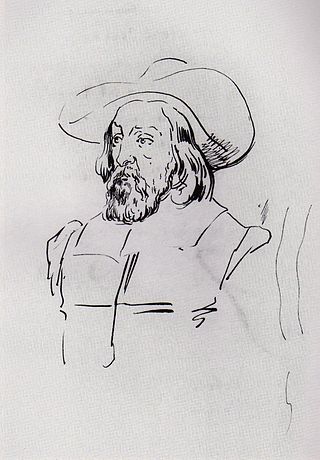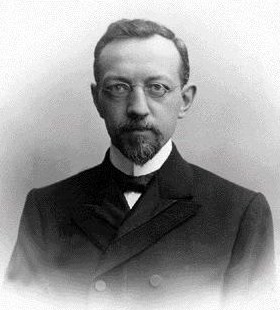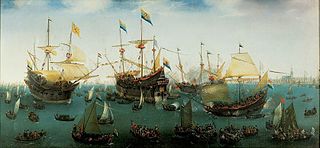
The Dutch West India Company was a chartered company of Dutch merchants as well as foreign investors. Among its founders was Willem Usselincx (1567–1647) and Jessé de Forest (1576–1624). On 3 June 1621, it was granted a charter for a trade monopoly in the Dutch West Indies by the Republic of the Seven United Netherlands and given jurisdiction over Dutch participation in the Atlantic slave trade, Brazil, the Caribbean, and North America.

The United East India Company was a chartered company established on the 20th March 1602 by the States General of the Netherlands amalgamating existing companies into the first joint-stock company in the world, granting it a 21-year monopoly to carry out trade activities in Asia. Shares in the company could be bought by any resident of the United Provinces and then subsequently bought and sold in open-air secondary markets. It is sometimes considered to have been the first multinational corporation. It was a powerful company, possessing quasi-governmental powers, including the ability to wage war, imprison and execute convicts, negotiate treaties, strike its own coins, and establish colonies.

Johan Hendrik Caspar Kern was a Dutch linguist and Orientalist. In the literature, he is usually referred to as H. Kern or Hendrik Kern; a few other scholars bear the same surname.
J.C.M. Warnsinck was a Dutch naval officer and naval historian.

The Hollandsche IJzeren Spoorweg-Maatschappij or HSM was the first railway company in the Netherlands founded on 8 August 1837 as a private company, starting operation in 1839 with a line between Amsterdam and Haarlem. The company remained operational until 1938, when it merged with the Maatschappij tot Exploitatie van Staatsspoorwegen (SS) to form the Nederlandse Spoorwegen (NS).

Rijcklof Volckertsz. van Goens was the Governor of Zeylan and Governor-General of the Dutch East Indies. He was the Governor of Zeylan from 12 May 1660 to 1661, then in 1663 and finally from 19 November 1664 to 1675 during the Dutch period in Ceylon. He was also served as Council Member of India during 1679. Van Goens’ managed to monopolize the cinnamon trade, get hold of the Malabar pepper and drive away the Portuguese from Ceylon and the Coromandel Coast for the VOC.

Henk Wesseling was a Dutch historian. He was a professor of contemporary history at Leiden University, former rector of the Netherlands Institute for Advanced Study between 1995 and 2002.
The Concordia was a Dutch sailing ship of the Dutch East India Company that left Batavia on 15 January 1708 with two other vessels, Zuiderburg and Mercurius. Concordia had 130 people on board and was bound for the Cape of Good Hope and then the Netherlands. She was last sighted by Mercurius in open seas to the south of the Sunda Strait on 5 February 1708, in bad weather.

Pieter van den Broecke was a Dutch cloth merchant in the service of the Dutch East India Company (VOC), and one of the first Dutchmen to taste coffee. He also went to Angola three times. He was one of the first Europeans to describe societies in West and Central Africa and in detail trade strategies along the African coast.

Pieter Anthoniszoon Overtwater, also known as Anthonisz. or over 't Water, was a merchant/trader and official of the Dutch East India Company.

Amanatun was an Atoni princedom situated in what is today Indonesian West Timor, which existed up to 1962. It was also known as the princedom of Onam. The area once included one of the best ports where the commercially important sandalwood was loaded on Dutch and Portuguese ships.

Willem Fredrik Jacob Mörzer Bruyns,, is a Dutch historian of navigational science, specializing in the history of navigational instruments; he has also published on the history of the Dutch in the Arctic in the nineteenth century. He rose to be Senior Curator of Navigation at the Nederlands Scheepvaartmuseum before his retirement in 2005. Since 1972, Mörzer Bruyns published several books and a hundred-and-fifteen articles in scholarly journals, on the history of navigation and navigational instruments, and on the exploration of the Dutch in the Arctic, in the nineteenth century. He wrote seventy-five book reviews on these subjects in scholarly journals.
Jacobus Ruurd "Jaap" Bruijn, was one of the best known and respected Dutch maritime historians. He was professor of maritime history at the University of Leiden from 1979 until his retirement in 2003. During his 41-year teaching career as The Netherlands' only university professor of maritime history, he guided the doctoral theses of no fewer than 49 graduate students.

Johannes Cornelis Hendrik de Meijere was a Dutch zoologist and entomologist who specialised in Diptera and Coleoptera.

A voorcompagnie (pre-company) is the naming given to the trading companies from the Republic of the Seven United Netherlands that traded in Asia between 1594 and 1602, before they all merged to form the Dutch East India Company (VOC). The pre-companies were financed by merchants from the Northern Netherlands and rich immigrants from the Southern Netherlands. Because of the deadly competition, the government forced the smaller trading companies to unite and form the (United) East India Company, that on its turn received the exclusive rights for the trade with Asia for the following 21 years.

The Compagnie van De Moucheron was a pre-company and precursor of the Verenigde Oost Indische Compagnie from the Republic of the Seven United Netherlands that was founded by Balthazar de Moucheron, a ship owner from Antwerp in the Southern Netherlands. After the fall of Antwerp he moved his business to Zeeland. The fleet of the Compagnie van De Moucheron was made up of three ships, 'Ram', 'Schaap' (Sheep) and the pinasse 'Lam' (Lamb) and was headed by Joris van Spilbergen. Its fleet left on 5 May 1601 and returned to the Republic of the Seven United Netherlands in 1604.

The Veerse Compagnie was a pre-company from the Republic of the Seven United Netherlands that was founded by Balthazar de Moucheron, a ship owner from Antwerp in the Southern Netherlands. After the fall of Antwerp he moved his business to Zeeland. The fleet of the Veerse Compagnie was made up of two ships; 'Leeuw' (Lion) and 'Leeuwin' (Lioness) and was headed by Cornelis Houtman. Its fleet left from Veere on 28 March 1598 and returned to the Republic of the Seven United Netherlands in 1600.

Jhr. Johannes Cornelis de Jonge was a Dutch Rijksarchivaris, historian, and politician. He is best known for his encyclopedic Geschiedenis van het Nederlandsche Zeewezen, a naval history of the Netherlands that was based on the Dutch naval archives, a large part of which were destroyed in a fire in the archives of the Dutch Department of the Navy in 1844. By default therefore this history had to come in the place of the lost primary documents.
The Javanese Wars of Succession were three military confrontations between the Dutch East India Company (VOC) and the Mataram Sultanate on central Java between 1703 and 1755. The hereditary succession in Maratam was at stake, prompting the VOC to field its own candidates in an attempt to gain more influence in central and eastern Java. At the end of the Javanese Wars of Succession, Mataram was carved into three weak Vorstenlanden, independent in name only, as a consequence of the divide and rule policy of the VOC.
Horssen was an East Indiaman operated by the Delft chamber of the Dutch East India Company. She was launched in 1784 and made the voyage to the Far East in 1786. She then had sailed for several nearby ports in Asia, when she finally set out for the successful return voyage in 1791, carrying aboard the prisoner Mary Bryant to Cape Town. After arriving in Europe in 1792 she was put out of service.












